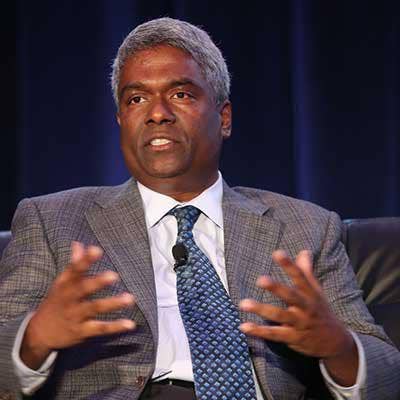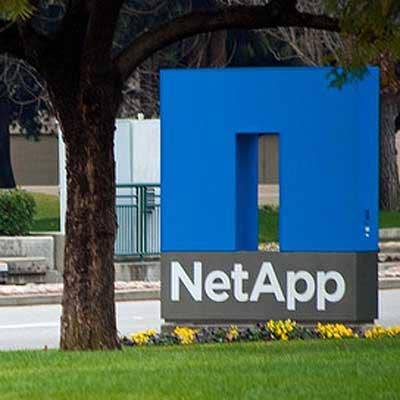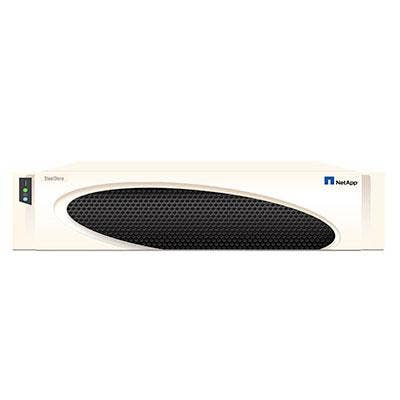CRN Exclusive: NetApp CEO Kurian On The Cloud, Hyper-Converged Infrastructure, And A Very Successful Fiscal Quarter

Seeing A Turnaround In NetApp's Storage Business
NetApp this week enjoyed the kind of news large storage vendors have seldom enjoyed in the last couple years: It's storage business appears to be back on the road to growth.
While NetApp's fiscal second quarter 2017 revenue and earnings were down slightly from the same period last year, investors saw growth in all the right places and drove NetApp's share prices up strongly in subsequent trading.
An all-flash storage business that is outgrowing the market, and the near-complete shift away from mature products to higher-margin strategic solutions is leading to optimism at NetApp that sustainable growth is around the corner despite the emergence of Dell EMC as a "formidable competitor."
CRN spoke over the phone with NetApp CEO George Kurian to discuss the fiscal results, but expanded the conversation to cover the company's flash storage, cloud storage, and rumored hyper-converged infrastructure plans. For a look at these and other topics, read on.

What are your thoughts about the third quarter financials?
We're pleased with the progress that we're making. [The] disciplined execution of our strategy is yielding results in both the top and bottom lines. Net revenue for the quarter was $1.34 billion, right at the midpoint of our guidance range, with operating margins and earnings per share above our previous guidance. We have expanded our innovation portfolio during the quarter with the industry-leading all-flash solutions and hybrid cloud solutions, demonstrating success in the alignment of our strategic portfolio of innovation with customers' IT priorities.
So I'm very pleased overall. We're making progress. We still have work to do, and must remain focused. But I'm even more confident now in our ability to successfully evolve the company and return it to growth.

What is the impact of NetApp's November layoff of about 6 percent of its workforce?
As part of our long-term transformation of the business, we had laid out a plan in Q3 of fiscal 2016 that communicated the realignment of the priorities of the company towards the faster-growing parts of the market and the alignment of resources against those priorities. We took action in the early part of this month to realign different parts of our company to those priorities. Those were taken as part of our long-term transformation program, rather than reflecting anything regarding our business in the last quarter or in the quarter ahead.

Quite often, when a company announces a layoff, a year later the headcount is back to pre-layoff numbers, or higher. EMC used to be known for this. Does NetApp do that sometimes?
We've been careful to ensure that we are disciplined in terms of the places we invest and the amount we invest. As you can see from our guidance, operating margins continue to improve towards the target ranges that we had laid out to the investment community. And so we feel really on-plan relative to the plan that we had laid out to both return the top-line to growth as well as to improve the operating margins and shareholder returns to the business. We're on-track for all of those elements.

Did the layoffs impact anything on the channel side of the business?
We continue to drive focus across all the different parts of our business. With regards to channels, as I've said, we laid out a plan to enable our channel partners to do more business with NetApp, including the implementation of our hard deck for channel partners. We're on-track for those initiatives to be in place. …
There's nothing specific [in the layoffs] to the channel.

NetApp has now gone a full quarter or two being the world's largest independent storage vendor. Is it lonely at the top?
We feel very good about where we are. If you look at our results, our all-flash array business continues to be an extremely strong part of our portfolio. We, from an annualized run-rate perspective, have crossed the billion-dollar [threshold for flash storage], which is a very strong indication of both the momentum of the business and the breadth of the business. And we have what we believe has upped the game in terms of innovation with the new Ontap 9 platform software, as well as SolidFire being added to our portfolio.
So we feel very, very good about where we are in the market. What we are entirely focused on as a leadership team is to deliver on our commitments to our investors, customers, and shareholders, and we seem to be right on track for that.

What is the timeline for returning to growth?
Our plan is to return the business to growth in the second half of this year. And if you look at our guidance, you'll see it's in-line with those expectations. We had communicated broadly the transition from the mature to the strategic solutions, the cost take-out, and the effect that the overall business would return to growth on a year-on-year perspective in fiscal year 2018. We are planning to return the revenue part of the business to growth in the second half of [fiscal 2017]. We are heads-down and focused on doing that, and we feel even more confident now than we were last quarter.

There's a lot of talk that NetApp might be getting into the hyper-converged infrastructure market. Is that happening?
Hyper-converged solutions have value for customers from a time-to-value, rapid provisioning standpoint. Both SolidFire and FlexPod automation allows us to address those customer needs. We have wins this quarter against hyper-converged vendors using the two technologies that I just mentioned. So we feel like we can address those customer requirements in a few different ways, and we're going to stay focused on the end customer requirements.
OK, is that a dismissal then of rumors that NetApp will come out with its own hyper-converged infrastructure solutions?
No comments on rumors.

What's the latest on Data Ontap adoption by NetApp's customers?
Clustered Ontap again had a strong quarter. Units shipped were up 14 percent year-on-year. And 86 percent of FAS systems shipped with Clustered Ontap. Thirty-six percent of the installed base, up from 32 percent last quarter, are now running Clustered Ontap. And we are getting closer to the point where the majority of the capacity managed in our installed base is managed by Clustered Ontap.
So we're right on track. We feel very encouraged by the progress across all dimensions of our business.

What's the update on NetApp's moves to connect data to public clouds?
You heard about the hybrid cloud solutions launch. We just announced a range of expansions of innovations of NetApp storage and data management technologies in concert with the leading public cloud providers. Everything from expansions of NetApp Private Storage as a Service solutions from several of our partners to allow customers very flexible, easy-to-procure options for secure cloud-connected storage, as well as services like Cloud Control for Azure and Office 365 that provide customers of cloud services secure backup and data protection services.
So we're excited. There's a lot of innovation in the portfolio. And most importantly, more and more customers are choosing NetApp technology for their current data center requirements because of the compelling hybrid cloud solutions roadmap we offer them. And we are seeing those wins materialize quarter over quarter at an accelerating pace.